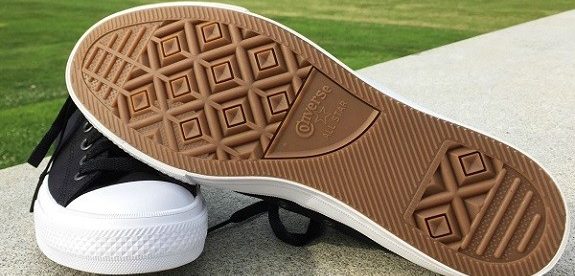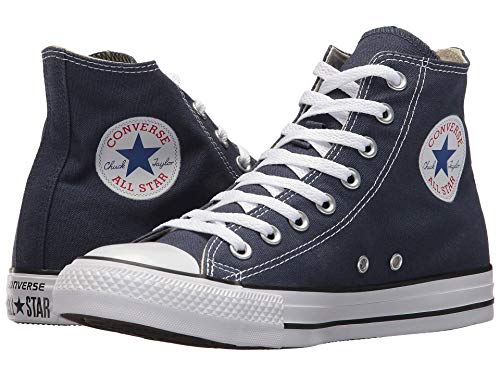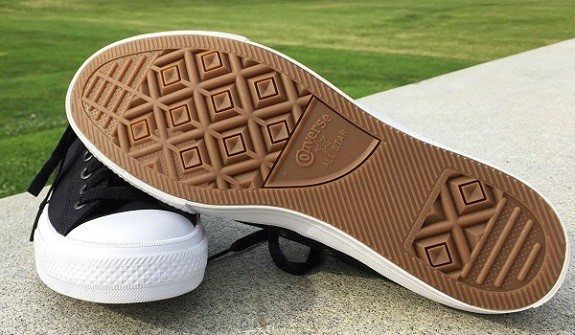The Slippers Which Slam Dunked on Loopholes


The sneakers pictured above are made by Converse (now a Nike subsidiary) and, formally, are called “Chuck Taylor All-Stars.” But they go by many other names, with “Cons” and “Chucks” leading the way. And as sneakers go, they have a storied history. Chucks are one of the first mass-produced basketball shoe, dating back to 1917 when the fledgling Converse company first developed a canvas sneaker with a rubber sole. A few years later, the sneaker also became the first one endorsed by an athlete. A semi-pro hoopster named Charles “Chuck” Taylor spent the late 1910s bouncing around the country playing wherever he could, often wearing Converse’s patented shoes. When he retired in 1921, Converse brought him on as a salesman, and ever since, the shoes above have featured his name and signature.
Over the century, though, other aspects of the sneaker have changed — and in one sense, Chucks are no longer “sneakers.” That’s because of what they look like on the bottom. Here’s a picture.

There’s still a rubber sole there — that’s indicated by the checkerboard-like pattern in the center and heel of the shoe. But surrounding those two windows is something else — diagonal lines around the shoe’s edges. That’s a felt-like substance, what Converse fan site Chuckverse describes as “a nice fuzzy sole [ . . . ] that almost looks like the little sticks of rubber coming out of a brand new tire.” At first blush, if you’re a basketball player or sneakerhead, you’d probably assume that this particular design element was there to enhance your performance; maybe it helped the sneaker grip the floor or something like that. But, nope: the “felt” is there to help make the price of the shoes cheaper — by avoiding a sneaker tax.
Most footwear purchased in the United States is manufactured in other countries; according to Quartz, an estimated 98.4% of shoes, sneakers, and the like are imported. And footwear is subject to all sorts of import taxes (also known as “tariffs”). When American importers bring shoes into the United States, they have to pay the U.S. government for the privilege. Different types of footwear are taxed at different rates, and sneakers are at the higher end; Quartz reports that “around 20% is the typical rate for an athletic shoe.”
But Converse found a way around this 20% tax. Slippers, it turned out, were taxed at a much lower rate. And, what makes a shoe a slipper? It turns out, the fuzziness of the sole matters. According to the economics blog of the University of Puget Sound, “the felt lining on the bottom of the sneakers allows Converse to classify their product as slippers, so the company benefits from a much lower tariff rate.” As far as the U.S. government is concerned, if you’re playing basketball while wearing Chucks, you’re dribbling in your slippers.
But don’t worry — wearing Chucks won’t put you at a competitive disadvantage on the basketball court — as Business Insider notes, “the fuzzy bottom doesn’t affect the performance of the shoe.” So for consumers, this little bit of “tariff engineering” (as such stunts are called) is a win-win. You get the same great shoes, but for a lower price.
Bonus fact: At the beginning of every episode of Mr. Rogers’ Neighborhood, Fred Rogers famously changed his sweater, more importantly for our purposes, and his shoes — he put on sneakers. Why? According to PBS-run website Rewire, “[his] work shoes he wore had too heavy a step for behind-the-scenes work, but canvas tennis shoes allowed Mister Rogers to walk around backstage, maneuvering puppets without a sound.”
From the Now I Know YouTube Channel: Are the X-Men (Legally) Human?: Another story of tariff engineering.
From the Archives: Why Pelé Tied His Shoes Before a 1970 World Cup Match: The short version? Money.
